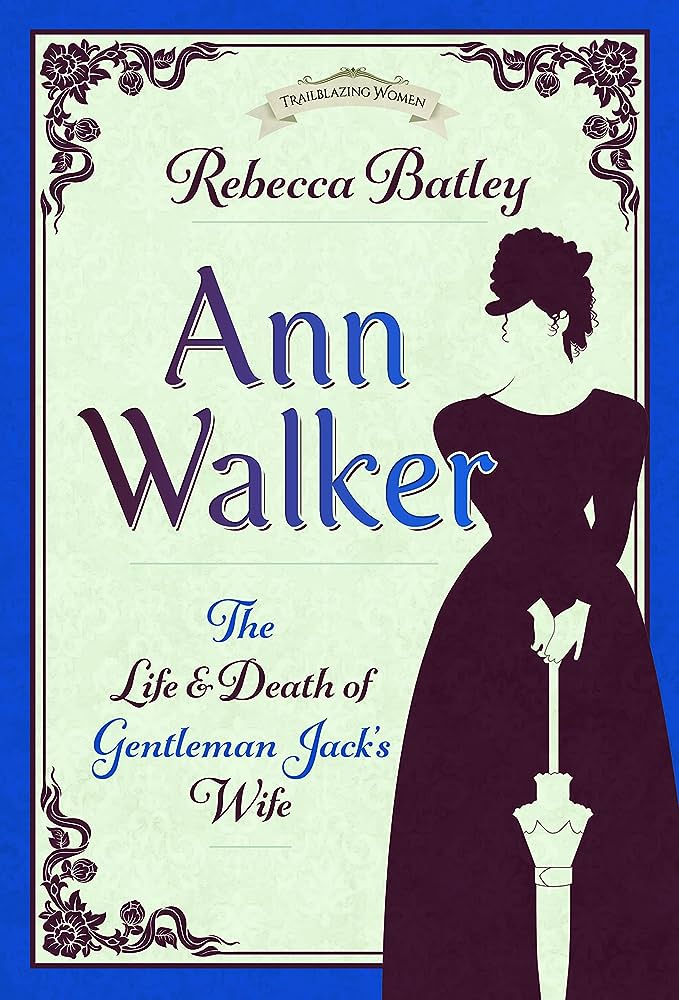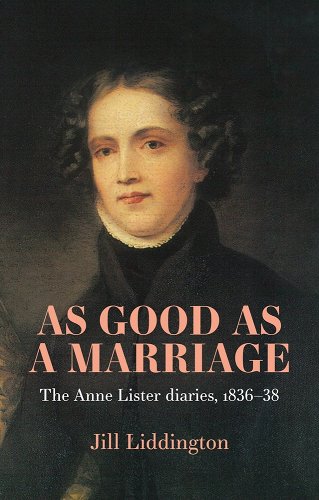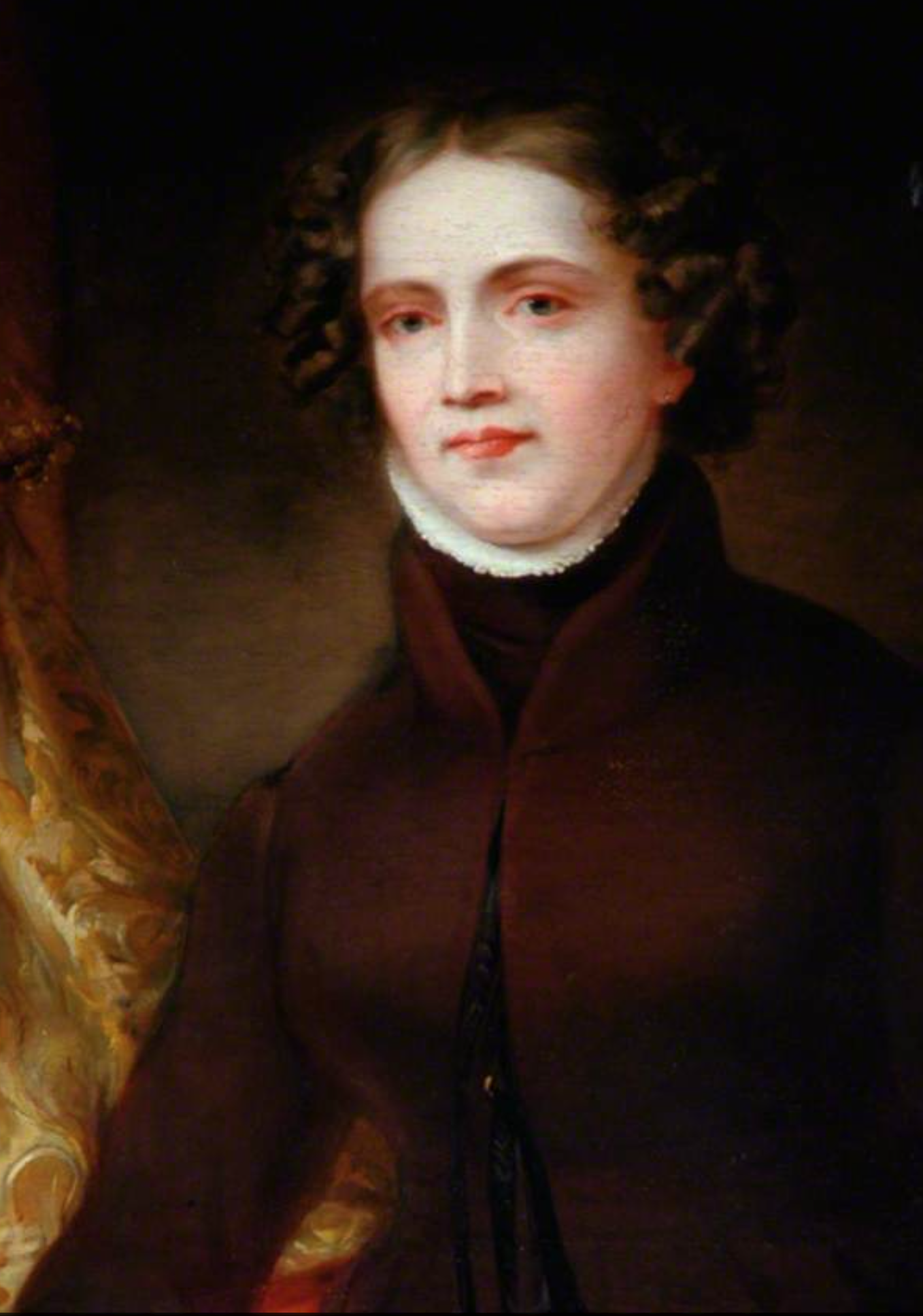 ANN WALKER
ANN WALKER
The Life and Death of Gentleman Jack’s Wife
by Rebecca Batley
Pen and Sword History
240 pages, $34.95
 AS GOOD AS A MARRIAGE
AS GOOD AS A MARRIAGE
The Anne Lister Diaries, 1836–38
by Jill Liddington
Manchester Univ. 384 pages, $36.95
FOR MANY READERS, the story of Anne Lister and Ann Walker is best known from the 2018 HBO series Gentleman Jack, in which Suranne Jones brilliantly portrayed Anne Lister as a formidable, charismatic woman who dressed like a man and lived with her wife as a married couple in the early 19th century. The accuracy of this portrayal is supported by Anne Lister’s diaries, which run to almost five million words and have been seen as the work of a world-class diarist. Anne Lister was a force to be reckoned with.
But what of Ann Walker, who married Anne Lister in 1834? Walker was portrayed in the series as the rather timid, emotionally labile heiress of a vast estate that was located close to Lister’s estate, Shibden Hall. When Lister returned to Shibden in 1832 after another heartbreaking end to a romantic relationship in which her lover married a man, she found herself in want of a wife—preferably a wealthy woman who could help finance her lofty plans to improve Shibden and expand her coal mining operation. Anne Lister called on Ann Walker with this goal firmly in mind, but soon began to fall under her sway. Walker was torn between her passion for Lister and her desperate desire to not offend God by doing something wicked. Of course, God ultimately lost out to Lister.

Two new volumes under review explore the period of Lister and Walker’s marriage from 1834 to 1840, when Lister died at age 49 during their travels in the remote reaches of Russia. She probably succumbed to cholera, one of the prevalent diseases at this time. Rebecca Batley’s Ann Walker: The Life and Death of Gentleman Jack’s Wife seeks to elevate the perception of Walker from the image of a retiring, somewhat unstable weakling to one of an accomplished manager of a large estate who held her own vis-à-vis Anne Lister. This is a somewhat fraught endeavor, as there aren’t nearly as many reference materials available on Walker as there are on Lister (including that diary). For the most part, Batley makes a convincing case there’s much more to Ann Walker than suggested by the Gentleman Jack series. But one is also left with the vague suspicion that much of her thesis is based on speculation rather than fact.
A single-volume diary written by Walker and discovered in 2020 has greatly aided research into her life. However, the diary mostly covers her travels with Lister beginning in 1834 and does not extend beyond 1835. In contrast, Lister’s diaries are very detailed and continuous, so what we know about Walker derives largely from Lister’s log. For example, we know from Lister’s diaries that Walker suffered frequently from low moods and a temper that eventually wore Lister down to the point of wishing to be out of the relationship. But were the low moods and bad temper a result of Walker’s emotional instability, or were they a reaction to provocations from Lister? The answer won’t be found in Lister, who rarely faulted herself, though she memorialized their many quarrels and her increasing impatience with them.
In contrast, Walker is more concerned with the details of their travels and the banalities of their lives than with these quarrels or her response to them. Lister’s diaries also make clear that she helped Walker in many ways with running her estate, though Walker did exert an active hand. She was also busy with running a school that she had founded. Walker had mixed feelings about sharing her money with Lister. Sometimes she was generous and considered Lister to have a husband’s interest in her estate; at other times they quarreled when Lister asked for money to run the household.
As Good as a Marriage, by Anne Lister scholar Jill Liddington, is an annotated volume of Lister’s diaries from 1836 to 1838. This period covers the heart of her married life with Walker, which was also a time of great business activity. Her remarkable energy leaped off the screen in Gentleman Jack, which accurately reflected what we find in the diaries. The number of projects she initiated and the financial deals she put together is truly breathtaking. At the same time, the downward course of her marriage was tracked in detail—at times, heartbreakingly so.
Lister’s diaries are written in two hands. The largest portion is in common script and describes her daily activities in great detail. They offer an unparalleled insight into 19th-century Yorkshire. The other entries are in code and deal with her relationship and sex life. The sexual descriptions are so frank that they may even raise a few 21st-century eyebrows. The earlier diaries contain many more entries in code than we find in the Liddington volume. As a single person, Lister romanced women and had torrid affairs, which she vividly recounted in the diary. In the period covered in this volume, she’s a married woman, has settled into domestic life, and is apparently not having as much sex as she’d previously had with other lovers.
The coded entries between 1836 and 1838 deal mainly with the disintegrating relationship between the two women. There are entries in which the women seems compatible and mutually supportive, but, as time goes by, Lister is increasingly annoyed by Walker’s moods and temper. Often she wouldn’t quarrel with Walker but instead sat in silent resentment. Walker also practiced the silent treatment, leaving a lot unsaid. The time they spent together when traveling was a calm amid the storm, as they seemed to treat each other better and get along while away from home. Lister was the more ambitious traveler, not surprisingly, and she pushed them further and further into Russia on their final trip. By the time Lister fell ill, they were too far from a medical facility to get help. When Lister died, Walker was left with the not inconsiderable task of transporting the body back to England.
The remainder of Walker’s life did not go well. She was declared a “lunatic” by her sister and institutionalized until her death. We know from Lister’s diary that Walker had long been treated by a Dr. Belcombe for “melancholia” and other mental issues, but we don’t know whether she was institutionalized for these reasons or because it was expedient for the sister. Walker left no diary of this time and wrote no letters to confidants, so her state of mind is unknown. Did she go along passively, or did she fight for her freedom?
As the scholarship on Anne Lister grows, so too does the possibility of a more definitive book on Ann Walker. There will undoubtedly be more books about Lister, who is a singularly fascinating figure to modern queer women who marvel at such a radical woman operating in the early 1800s. But Lister was not the only radical in the marriage. Walker, overwhelmed by religious guilt and family pressure, was equally courageous in embracing married life with a woman. Both were extraordinary people for their time.
Anne Laughlin, a writer based in Chicago, is the author of seven novels, including, most recently, Money Creek.





Discussion1 Comment
I loved the lines, “Walker was torn between her passion for Lister and her desperate desire to not offend God by doing something wicked. Of course, God ultimately lost out to Lister”. The insane asylum was a common ploy by families to grab the family fortune.